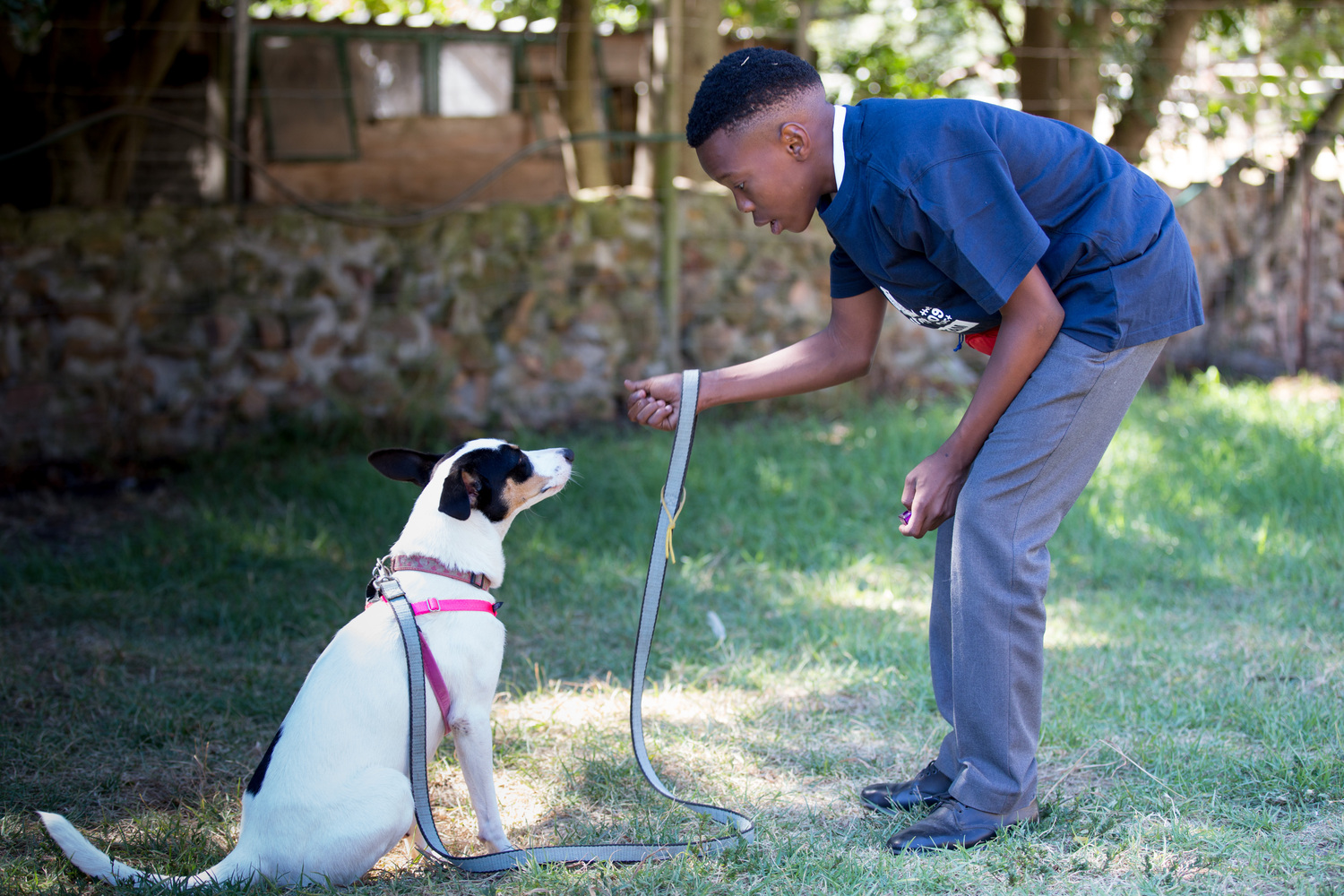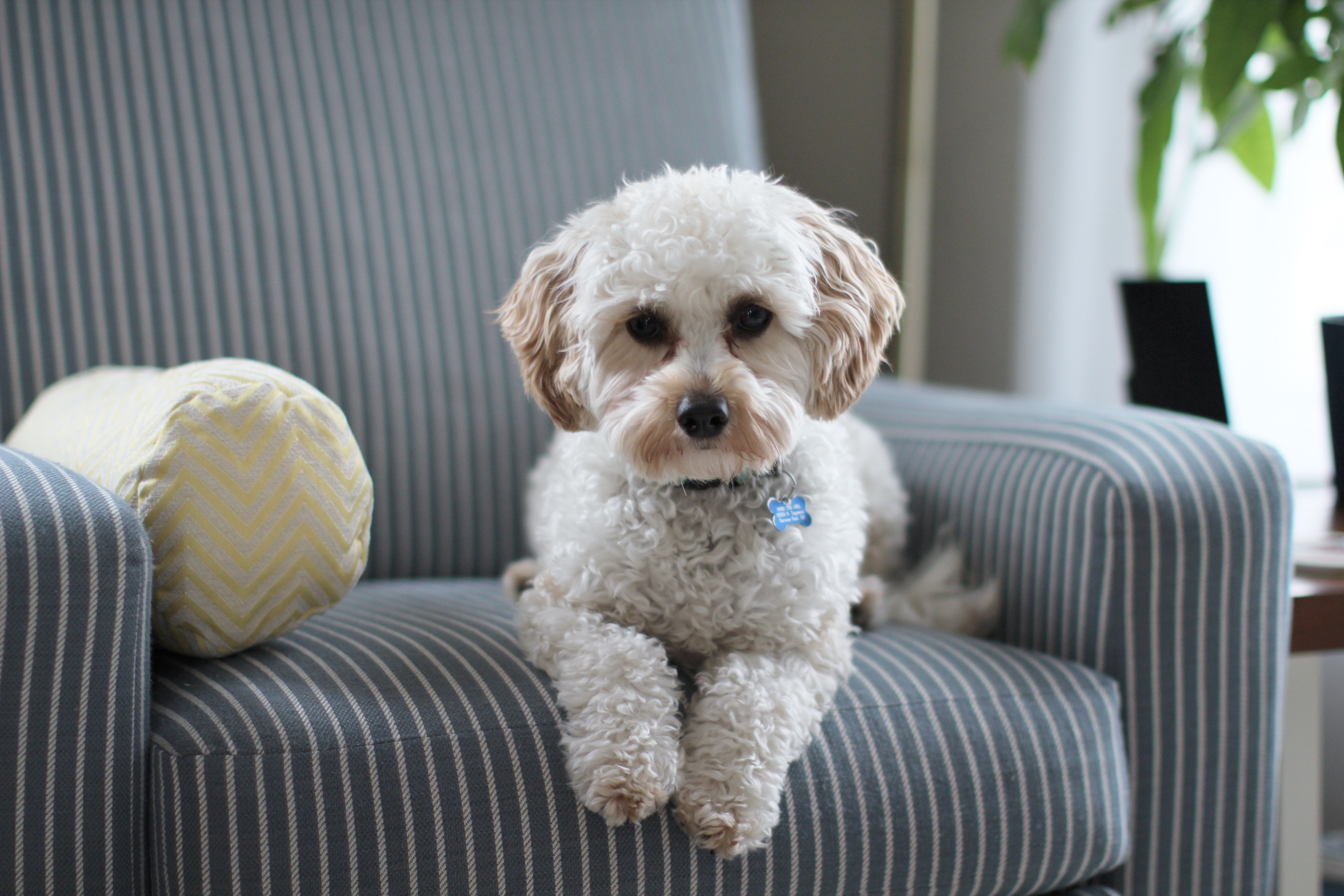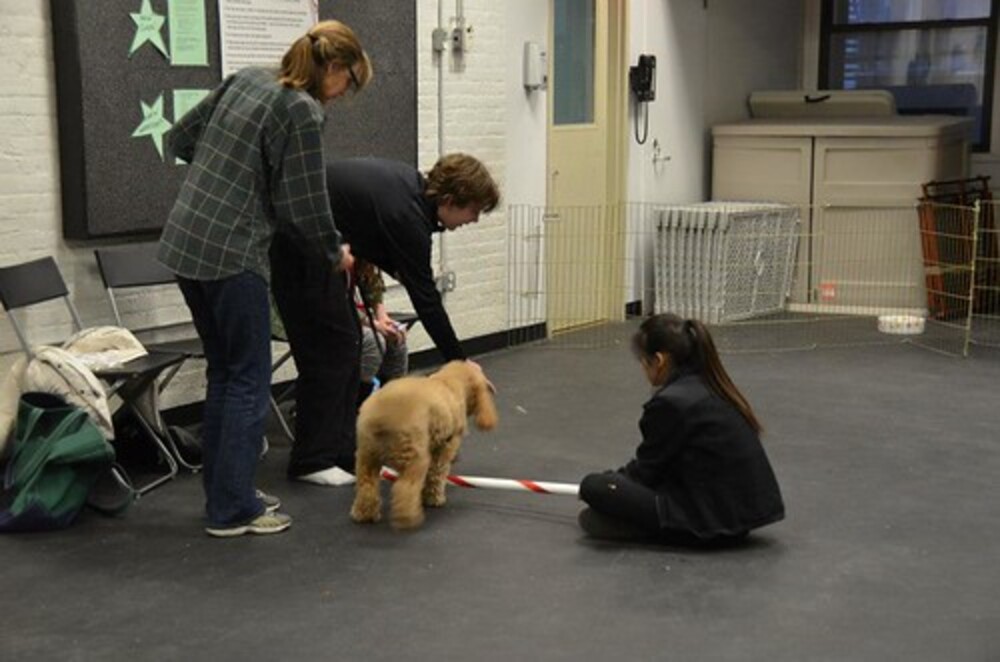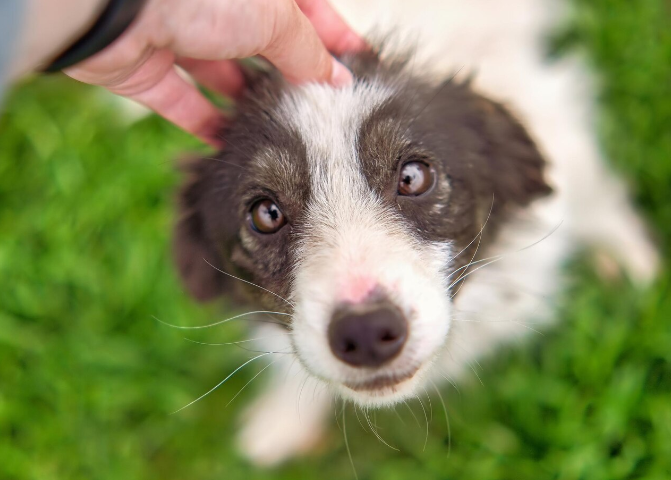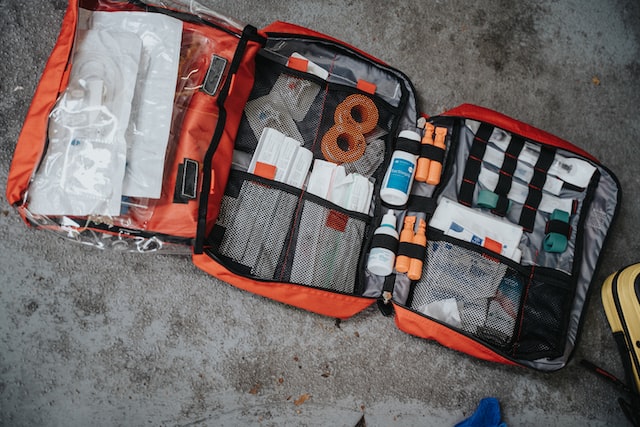- Key Takeaways
- Emotional Support Animals (ESA) on Alaska Airlines
- How to Fly with a Pet or ESA on Alaska Airlines
- Psychiatric Service Dogs on Alaska Airlines
- Do Psychiatric Service Dogs Fly for Free?
- How to Fly with Your Psychiatric Service Dog on Alaska Airlines
- Getting a Legitimate Psychiatric Service Dog through Service Dog Training School
- What is the Air Carrier Access Act (ACAA)?
- Difference Between an Emotional Support Animal and a Psychiatric Service Dog
- Alaska Airlines’ Service Dog Policies
- Other Alaska Airlines Pet Policies
- Alaska Airlines’ Travel Requirements
- Tips from Service Dog Training School for Flying with ESAs and Psychiatric Service Dogs
- Frequently Asked Questions
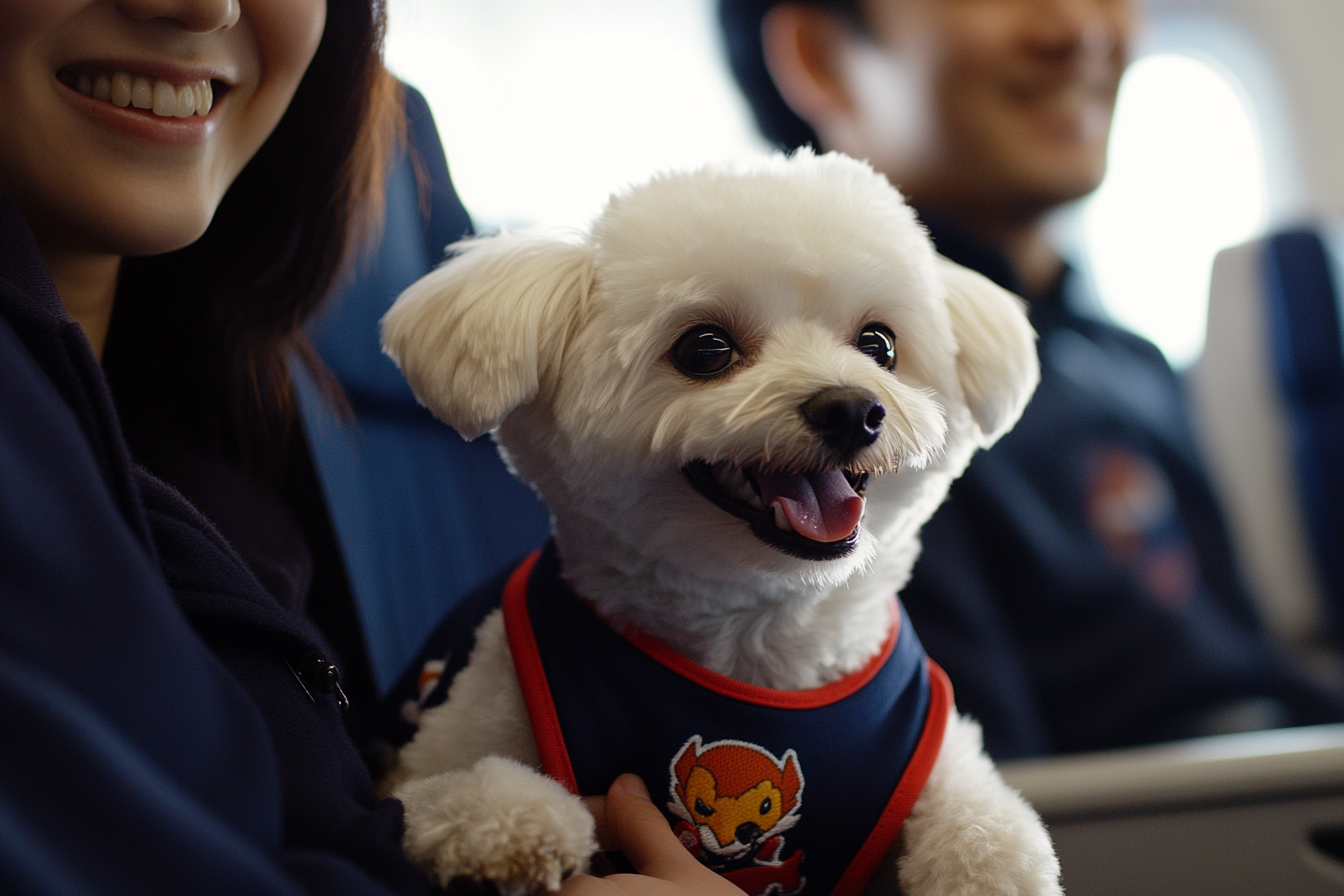
Key Takeaways
- Does Alaska Airlines Accept Emotional Support Animals (ESA)?
Similar to most other carriers, Alaska Airlines no longer recognizes ESAs as service animals, meaning they must follow the same guidelines as standard pets.
- Does Alaska Airlines Accept Psychiatric Service Dogs?
Yes, Alaska Airlines accepts psychiatric service dogs as legitimate service animals. Psychiatric service dogs are trained to perform specific tasks that assist individuals with psychiatric conditions, such as anxiety, PTSD, or depression. These dogs can fly free of charge, but travelers must provide the required documentation, such as a completed DOT Service Animal Air Transportation form, and may need to give advance notice to the airline before their flight.
- Do Service Dogs Fly for Free?
All service dogs, including psychiatric service dogs, that meet Alaska Airlines’ requirements can fly at no additional cost.
- How to Get a Psychiatric Service Dog:
To get a psychiatric service dog, the dog must be trained to perform specific tasks that assist with your disability. If you already have a dog, the professionals at ServiceDogTrainingSchool can help you to train your own dog to be the ideal service dog to meet your needs.
- How to Qualify for a Psychiatric Service Dog:
To qualify for a psychiatric service dog, you must have a diagnosed mental or emotional disability, such as anxiety, PTSD, depression, or bipolar disorder.
- How to Get Started:
Get started by taking the simple SDTSI online PSD training assessment to see if you qualify, and enroll in the Psychiatric Service Dog Training Course to train your own dog.
Emotional Support Animals (ESA) on Alaska Airlines
To travel with an ESA on Alaska Airlines, you must follow the airline’s standard pet travel procedures, including using an approved pet carrier and providing required documentation. Emotional Support Animals traveling as pets are subject to pet fees, which start at $100 per flight segment. They must also meet the size and breed restrictions set by Alaska Airlines, which vary based on whether the pet is traveling in the cabin or as cargo. Advance reservations for pets are recommended, as space is limited.
If you rely on your ESA for emotional support, consider consulting with a professional about training your animal as a psychiatric service dog, which would then qualify it for service animal privileges under Alaska Airlines’ policies.
Recent Regulatory Changes Affecting ESAs
In January 2021, the U.S. Department of Transportation (USDOT) ceased classifying emotional support animals (ESAs) as service animals. The new guidelines mandate that airlines must treat psychiatric service dogs (PSDs) the same way they treat other service animals, such as guide dogs and hearing dogs, allowing them to travel with their owners.
Following this federal regulation change, Alaska Airlines updated its policies and became the first U.S. airline to no longer accept ESAs as service animals. Passengers can still travel with ESAs if they adhere to Alaska Airlines’ pet guidelines and pay the associated fee.
For travel with a psychiatric service animal, Alaska Airlines requires proper documentation. While not a requirement, having a psychiatric service dog trainng certification or verification letter from Service Dog Training School can help document your PSD’s status.
How to Fly with a Pet or ESA on Alaska Airlines
To ensure a hassle-free experience when flying with your pet or emotional support animal on Alaska Airlines, it is important to arrive early on the day of your flight to allow extra time for check-in procedures. Be sure to bring all necessary documentation, including identification, vaccination records, and any required health certificates. Prior to your flight, ensure your pet gets plenty of exercise to help reduce anxiety and prevent hyperactivity during the journey. Additionally, take your pet to the designated animal relief area at the airport for a potty break before boarding. This will help keep your pet comfortable throughout the flight. For more detailed guidelines and requirements, please refer to the Alaska Airlines Pet Policy FAQ.
Psychiatric Service Dogs on Alaska Airlines
Alaska Airlines welcomes psychiatric service dogs (PSDs) on their flights, as they are recognized as legitimate service animals under federal regulations. PSDs are trained to perform specific tasks that assist individuals with mental health conditions, such as anxiety, PTSD, or depression.
Do Psychiatric Service Dogs Fly for Free?
Psychiatric service dogs fly for free on Alaska Airlines. Unlike emotional support animals or pets, psychiatric service dogs are not subject to pet fees or carrier restrictions as long as they meet the airline’s requirements for service animals. To ensure a smooth experience, it’s important to provide all necessary documentation and notify the airline in advance of your travel.
For further details on traveling with your psychiatric service dog, it’s recommended to review Alaska Airlines’ specific service animal policies and contact customer service with any questions.
How to Fly with Your Psychiatric Service Dog on Alaska Airlines
Alaska Airlines requests that passengers traveling with a psychiatric service dog or any service animal contact the airline in advance and notify the customer service agent upon arrival at the airport. Travelers must submit the DOT Service Animal Air Transportation Form at least 48 hours before their flight, verifying that the dog is trained to perform tasks related to their disability. Service animals must remain under control at all times and are not permitted to block aisles, emergency exits, or sit in the exit row. Alaska Airlines recommends selecting a window seat to minimize foot traffic around the animal, ensuring a safer and more comfortable journey for both the passenger and the service dog.
Getting a Legitimate Psychiatric Service Dog through Service Dog Training School
Service Dog Training School makes it easy to fly with your PSD that meets airline policy.
Assess Your Needs
Begin by taking a 3-minute online quiz that assesses your needs. This quiz uses your responses to evaluate whether you may qualify for a psychiatric service dog. After completing the quiz, you’ll be prompted to choose the type of training.
Train Your Psychiatric Service Dog
Before your canine companion can accompany you as a service animal, they must be trained to perform tasks specific to your disability. These tasks may include fetching medication, providing deep pressure therapy (DPT), and responding to emergencies. ServiceDogTrainingSchool’s psychiatric service dog (PSD) training program offers an easy way to teach your dog these essential skills online, allowing you to train from the comfort of your home.
Get Your Service Dog Certification
Once your dog completes its training, you will obtain certification that verifies your dog as a legitimate psychiatric service dog, which will be required for travel.
What is the Air Carrier Access Act (ACAA)?
The Air Carrier Access Act prohibits discrimination against individuals with disabilities during air travel. This Department of Transportation (DOT) regulation applies to all U.S. airlines, as well as foreign airlines flying to or from the United States.
Airlines cannot refuse service to a passenger solely because of a disability, unless it poses a safety concern. They are also required to provide reasonable accommodations for passengers with disabilities, including allowing them to travel with a fully trained and well-behaved service animal. Airlines may request up to 48 hours’ advance notice for service animal accommodations and may also require passengers to complete forms detailing the service animal’s training, health, and behavior.
Difference Between an Emotional Support Animal and a Psychiatric Service Dog
Psychiatric service dogs (PSDs) are specially trained to assist their handlers with tasks directly related to their disabilities, and most have also completed basic behavioral training. In contrast, emotional support animals (ESAs) provide comfort through companionship but are not trained to perform specific tasks.
Federal laws, such as the Americans with Disabilities Act (ADA) and the Air Carrier Access Act (ACAA), mandate that most public facilities, businesses, and airlines accommodate service animals, including psychiatric service dogs. Since PSDs perform specific tasks that mitigate their owner’s disability, they qualify as service animals under these laws, requiring airlines to make reasonable accommodations for them.
However, when it comes to housing, different rules apply. Housing providers are legally required to accommodate emotional support animals, even though ESAs may have varying levels of behavioral training, from extensive to none. Landlords may deny accommodation for an ESA if the animal is unmanageable or not housebroken.
Alaska Airlines’ Service Dog Policies
Alaska Airlines welcomes service dogs, including psychiatric service dogs (PSDs), on their flights to assist passengers with disabilities. To ensure a smooth and compliant travel experience, the airline has specific policies and requirements that must be followed when traveling with a service dog.
Required Documentation
To travel with a service dog on Alaska Airlines, passengers are required to submit the DOT Service Animal Air Transportation Form. This form confirms that the service dog is trained to perform tasks that assist with the handler’s disability, is well-behaved, and will remain under control during the flight. The form also includes details about the dog’s health, training, and ability to manage public settings. Alaska Airlines may also request additional documentation or information depending on the specific route or destination, particularly for international flights where additional requirements may apply.
Advanced Notice
Passengers traveling with a service dog must provide advanced notice to Alaska Airlines, ideally at least 48 hours before the flight. This allows the airline to review the required documentation and ensure all policies are met, minimizing any delays or complications at the airport. Advanced notice also helps the airline accommodate the service dog comfortably within the cabin, as there are specific seating arrangements, such as avoiding exit rows and ensuring the dog does not obstruct aisles or emergency exits.
Providing advanced notice and adhering to the documentation requirements will ensure a smooth travel experience with your service dog on Alaska Airlines.
Other Alaska Airlines Pet Policies
To find out more, contact reservations at 1-800-252-7522. If your travel plans include another airline, please contact the partner airline directly to reserve space, confirm fees, and obtain additional information. Alaska Airlines does not transfer pets traveling in the baggage compartment to other carriers; pets must be claimed and rechecked with the connecting airline.
Alaska Airlines’ Pet Fees
• $100 per pet traveling in the cabin.
• $150 per pet traveling in the baggage compartment.
• $100 per pet traveling in the baggage compartment for travel entirely within the State of Alaska, or for active duty U.S. military personnel and their dependents on travel orders.
• Pet travel fees will be collected at the airport.
These fees are in USD/CAD and apply per kennel or carrier, each way, for travel on Alaska Airlines only. If your itinerary includes another airline, additional fees may apply; please check with the other airline for their specific fees. Trained service animals can travel for free.
Breed Restrictions
Before traveling with your pet, it’s important to ensure they can do so safely. Alaska Airlines restricts certain “short-nosed” breeds from traveling in the cargo compartment due to their increased risk of respiratory issues. However, these pets may fly in the cabin if they meet the cabin requirements and remain under constant supervision by their owner. The restricted breeds include:
• American Pit Bull
• American Staffordshire Terrier
• Boston Terrier
• Boxer
• Brussels Griffon
• All Mastiff breeds
• Bulldog
• Bull Terrier
• Chow Chow
• English Bulldog
• English Toy Spaniel
• French Bulldog
• Japanese Boxer or Pug
• Japanese Spaniel
• Pekingese
• Pug
• Shih Tzu
• Staffordshire Bull Terrier
Owners of these breeds should consider these restrictions when planning air travel to ensure their pets’ safety and comfort.
Traveling with pets in cabin or in the baggage compartment
Space for pets traveling in the cabin or baggage compartment is limited and subject to availability. Pets traveling in the baggage compartment are also subject to breed restrictions, specific travel date embargoes, and fleet limitations.
Pet Traveling in Cabin
To travel in the cabin, pets must be small enough to fit comfortably in a carrier that can be stored under the seat. Hard-sided carriers must not exceed 17” x 11” x 7.5”, while soft-sided carriers can be up to 17” x 11” x 9.5”. Each pet carrier counts towards your carry-on bag allowance. You are allowed to bring up to two pet carriers in the cabin; however, for the second carrier, you must purchase an additional seat next to yours to accommodate it under that seat.
For the updated data, please refer to Alaska Airline's Traveling with Pets in Cabin.
Pet Traveling in Baggage Compartment
Alaska Airlines accepts most domesticated pets for travel in our climate-controlled baggage and cargo compartments. Please check details at Alaska Airlines's Pets in Baggage Compartment.
Health Certificates:
• Cargo Compartment: All pets traveling in the cargo compartment must have a health certificate dated within 10 days of the outbound journey and 30 days of the return journey.
• Cabin: Pets traveling in the cabin do not need a health certificate. However, some states may have specific health and vaccination requirements.
Alaska Airlines’ Travel Requirements
Domestic Travel
• Passengers aged 18 or older may travel with dogs, cats, household birds, and rabbits in the cabin.
• Dogs and cats must be fully weaned, at least 8 weeks old, and accustomed to eating solid food for at least five days without nursing.
• Pets traveling in the baggage compartment or cargo must meet age and size restrictions.
International Travel
• Only dogs and cats are allowed on international flights.
• Health and vaccination requirements vary by destination. It is your responsibility to comply with both U.S. regulations and those of the destination country.
• Alaska Airlines will not cover any additional costs incurred due to failure to meet the destination country’s documentation requirements.
U.S. Inbound Travel
• Only dogs and cats may enter the U.S. from non-U.S. locations.
• Pets must have a valid health certificate that includes the breed, age, sex, and description of the animal.
• A family is limited to bringing two animals into the U.S. per flight from Mexico.
• Proof of rabies vaccination may be required when transporting animals from high-risk countries, as per CDC requirements.
• For detailed information on specific countries’ requirements, please visit the Alaska Airlines website.
Tips from Service Dog Training School for Flying with ESAs and Psychiatric Service Dogs
Plan Ahead
Start planning your trip well in advance to ensure you have all required documentation and meet all airline requirements.
Book Early
Reserve your spot as early as possible, especially if traveling with a pet, as there are limits to the number of animals allowed per flight. Early booking also increases your chances of securing a seat and ensures there is adequate space for both you and your animal.
Check Destination Requirements
Verify any specific requirements or restrictions for service animals at your destination, including international travel considerations. If you have a connecting flight, you are responsible for retrieving your pet at baggage claim and re-checking them onto the next flight.
Offer Food and Water
If your pet is traveling in the cargo compartment, you must provide them with food and water within four hours of check-in. Ensure that the amount of food and water is sufficient for the entire duration of the flight. For extended flights or layovers, it’s important to check the specific airline’s guidelines for additional provisions or requirements. Properly preparing your pet’s food and water needs helps ensure their comfort and well-being throughout their journey.
Ensure your service dog is well-fed and hydrated before your flight, but avoid feeding immediately before flying to prevent motion sickness.
Ensure Your Dog is Well-Trained Before Boarding
To ensure your dog has the best flying experience, it’s crucial to have them well-trained in both general behavior and any specific psychiatric service dog (PSD) tasks. Service Dog Training School provides an online dog training course that is both convenient and effective. A well-trained dog is more likely to have a smooth and pleasant flight, so investing in their training is key to a successful journey.
Frequently Asked Questions
- Does Alaska Airlines Deny Emotional Support Animal (ESA)?
Similar to most other carriers, Alaska Airlines no longer recognizes ESAs as service animals, meaning they must follow the same guidelines as standard pets.
- Can my dog sit on my lap during an Alaska Airlines flight?
Your service dog may sit on your lap during the flight if it fits comfortably without encroaching on other passengers’ space. In contrast, emotional support animals (ESAs) must remain in their carrier under the seat according to Alaska Airlines’ pet policy.
- Can Alaska Airlines ask for proof of a psychiatric service dog?
Airlines may inquire about the specific tasks your psychiatric service dog performs to assist with your disability. The simplest way to verify that your dog is a legitimate service animal is by presenting an official PSD training certification from Service Dog Training School.





